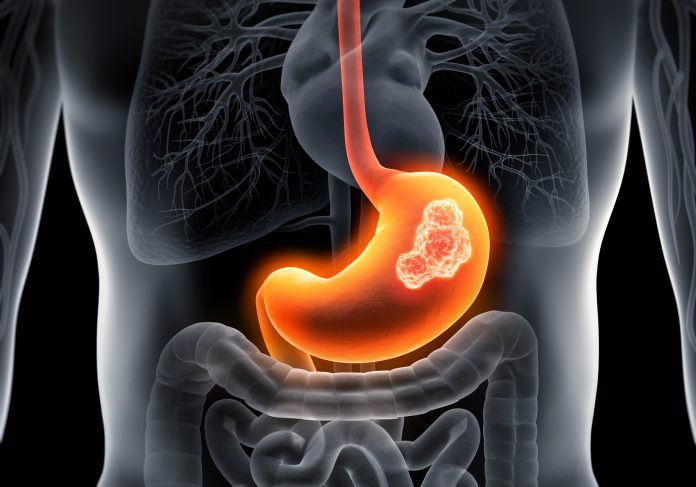
A gene signature generated from a machine learning algorithm appears to predict the likelihood of which patients with gastric cancer will benefit from chemotherapy or immunotherapy, according to a new study.
“We were pleased that our 32-gene signature provided not only prognostic information, but also predicted patient benefit from chemotherapy and immunotherapy,” says lead author Tae Hyun Hwang, Florida Department of Health cancer chair at Mayo Clinic Cancer Center in Florida. The study appears in Nature Communications.
“In particular, we were surprised that the 32-gene signature we identified was able to predict a patient’s response to immunotherapy because identifying reliable biomarkers for immunotherapy response in patients with gastric cancer has been a challenge for the field.”
“Gastric cancer is among the leading causes of cancer-related death, worldwide,” adds Hwang.
He notes that most patients with gastric cancer are treated with chemotherapy, and sometimes immunotherapy, as part of their treatment plan. However, not all patients benefit from these therapies. For example, fluoropyrimidine-platinum doublet is standard of care therapy in the adjuvant setting. However, it only confers an approximate nine percent improvement in long-term survival.
“We sought to use genomic sequencing to build a model that predicts the likelihood that a patient will derive benefit from chemotherapy or from immunotherapy,” he says.
To create their NTriPath model, Hwang and his team developed and implemented a machine learning algorithm that integrated genetic data from several thousand patients.
As the authors describe in their paper, the somatic mutation profiles of 6681 patients with 19 different cancers from TCGA (The Cancer Genome Atlas) were put into NTriPath to identify pathways that were altered specifically in gastric cancer. Microarray-based mRNA expression profiles of 567 gastric cancer patients were generated and then processed in NTriPath.
Next, unsupervised clustering based on the expression of 32 member genes that comprised the top three altered pathways were used to identify molecular subtypes.The top three gastric cancer-specific pathways consisted of 32 genes including TP53, BRCA1, MSH6, PARP1, and ACTA2, which were enriched for DNA damage response, TGF-ß signaling, and cell proliferation pathways
The prognostic and predictive capability of the molecular subtypes were tested in multiple independent cohorts.
This group previously identified five transcriptomic-based molecular subtypes that predicted survival. In that report, the inflammatory subgroup had the best prognosis, the mesenchymal subgroup had the worst prognosis, and the other three groups had intermediate outcomes and overlapped with each other. The team compared the two classification schemes and found that each of the 32-gene groups were generally represented in all 5 molecular subtypes.
Hwang says the 32-gene molecular signature still needs prospective validation, but he believes it eventually will be able to identify patients who are likely to respond to chemotherapy and immunotherapy. “Similarly, we would also be able to identify patients who are unlikely to benefit from chemotherapy and immunotherapy, thereby sparing them the potential side effects of these therapies,” he says.
Hwang and his team also are working to develop new assays based on the expression level of a single, or a few, genes to make biomarkers more accessible and easily deployed in the clinical setting.
“We are working on artificial intelligence algorithms that utilize diagnostic histopathology images to identify patients most likely to derive benefit from immunotherapy,” says Hwang. “We are also studying the molecular mechanisms of immunotherapy resistance made available by the machine learning and artificial intelligence approaches that we have developed in our lab.













